Cette page est en cours de construction. Plus de détails seront ajoutés au fur et à mesure qu’ils seront disponibles. Les détails de ces présentations ne sont disponibles que dans la langue de présentation.
Conférence publique commémorative Herzberg :
Lundi 9 juin, 19h45-21h00, Western Development Museum
(Connaissez-vous quelqu’un qui sera dans la région de Saskatoon le 9 juin ? Envoyez-lui un lien vers cette page pour qu’elle puisse obtenir un billet pour assister à cette conférence. Les délégués peuvent obtenir un billet lors de leur inscription au Congrès).
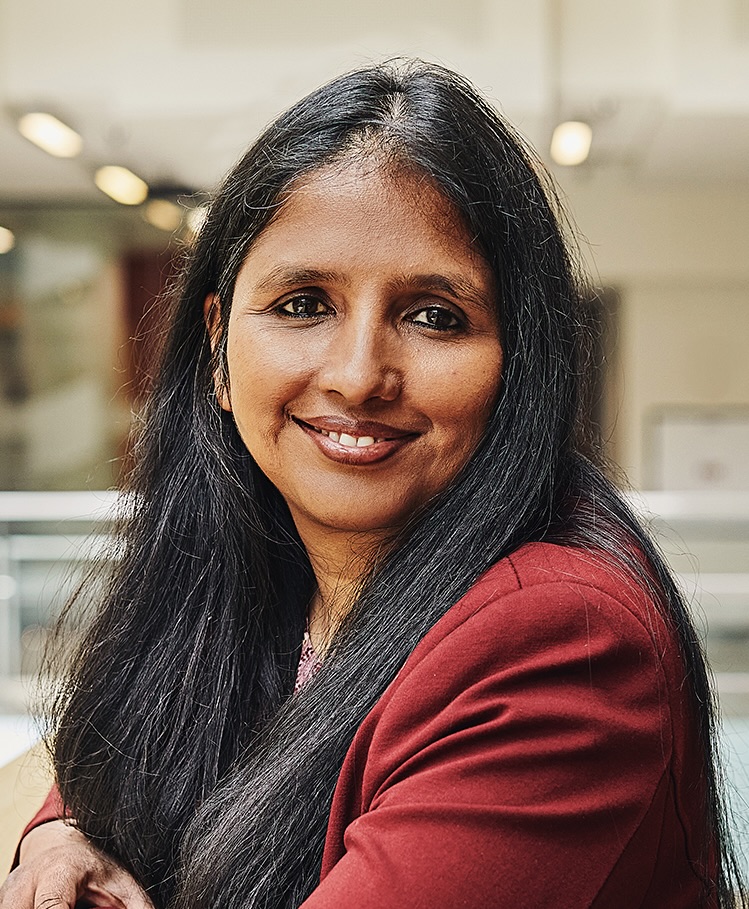
Shohini Ghose | Wilfrid Laurier University
Professeure de physique et d’informatique, et titulaire de la Chaire du CRSNG pour les femmes en sciences et en génie ; Directrice de la recherche et des programmes, Centre for Women in Science (WinS) ; Directrice de la technologie, Quantum Algorithms Institute
Shohini Ghose est professeure de physique, et titulaire de la Chaire du CRSNG pour les femmes en sciences et en génie à l’Université Wilfrid Laurier, et Directrice de la technologie du Quantum Algorithms Institute. Ses recherches portent sur des sujets fondamentaux de la science de l’information quantique ainsi que sur le développement d’applications concrètes des technologies quantiques avec des partenaires industriels. Elle est membre du Conseil consultatif quantique du Canada pour la Stratégie nationale quantique et a siégé au Conseil consultatif du Programme international des sciences fondamentales de l’UNESCO. Dre Ghose est la Directrice fondatrice du Laurier Centre for Women in Science, reconnu à l’échelle nationale, et elle a été Présidente (2019-20) de l’Association canadienne des physiciens et physiciennes. Elle a notamment reçu une bourse TED Senior Fellowship et a été sélectionnée au Collège de la Société royale du Canada, et ses conférences et vidéos en ligne ont été visionnées plus de 8 millions de fois. Son récent livre, Her Space, Her Time, a remporté le prix du livre 2023 décerné par Science Writers and Communicators of Canada. Dre Ghose a récemment fondé le Centre for Responsible Quantum Innovation and Technologies (CRQIT) avec des partenaires du monde universitaire et de l’industrie de tout le Canada.
(la conférence sera donnée en anglais seulement)
Se préparer à Quantum 2.0
Des lasers à l’électronique en passant par les horloges atomiques, la science quantique a déjà transformé nos vies. Aujourd’hui, les technologies émergentes telles que les ordinateurs, les capteurs et les communications quantiques offrent la promesse d’une deuxième révolution quantique. Qu’est-ce qui rend le traitement quantique de l’information si puissant ? Comment dépasser le battage médiatique pour évaluer honnêtement son potentiel ? Êtes-vous prêt à participer à Quantum 2.0 ? Découvrez-en plus dans cette conférence.
Conférenciers pléniers :
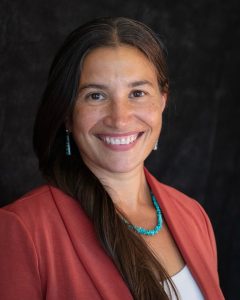
Kathryne Daniel | University of Arizona
Lundi, le 9 juin, 09h00-09h45
Kathryne J Daniel is an Associate Professor of Astronomy at the University of Arizona, Steward Observatory. Daniel’s research focuses on a broad range of topics in galactic dynamics including resonant phenomena such as radial migration, developing novel orbital analysis techniques, and using expanded dimensional sets to place constraints on the dynamical history of the Milky Way. Daniel is a Deputy Director for the next generation gravitational wave experiment, Cosmic Explorer, where she leads the Indigenous & Place-based Partnerships and Responsible Siting effort. She is also a co-Founder and co-Director of the Society of Indigenous Physicists.
“Two-Eyed Seeing”: Dynamical evolution across galactic scales and the future of big science
“Two-eyed seeing” was coined by Albert Marshall, a Mi’kmaq elder, to describe the depth of perspective gained when perceiving the world through both an Indigenous and Western lens. Using this framework, I will describe my approach to science, which focuses on emergent behavior in disk galaxies as a driver of evolution. Dynamical resonances are essential to the evolution of disk galaxies. These resonances arise in the presence of massive structures, like a bar, spiral arms and satellites, and they reshape a galaxy as they diffuse, shepherd and rearrange orbits and stellar populations. This talk will highlight a collection of methods that together enable us to connect orbital dynamics to morphological evolution. The end of this talk will touch on the status of the next generation gravitational wave observatory in the US, Cosmic Explorer. In particular, how our approach to site selection embodies two-eyed seeing and why our approach is critically important to the future of big science.
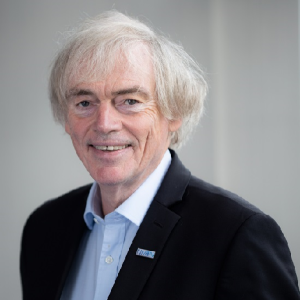
Pieter Cullis | University of British Columbia
Mardi, le 10 juin, 09h00-09h45
Dr. Cullis and co-workers have been responsible for fundamental advances in the development of nanomedicines employing lipid nanoparticle (LNP) technology for cancer therapies, gene therapies and vaccines. This work has contributed to five drugs that have been approved by the FDA, the EMA and other regulatory bodies. These include Onpattro (the first RNAi drug to receive regulatory approval) to treat the previously fatal hereditary condition transthyretin-induced amyloidosis (hATTR), as well as Comirnaty, the Pfizer/BioNTech COVID-19 mRNA vaccine.
Dr. Cullis has also co-founded eleven biotechnology companies that now employ over 500 people, has published over 400 scientific articles and is an inventor on over 100 patents. He co-founded two Canadian National Centre of Excellence networks, the Centre for Drug Research and Development (now AdMare) in 2004 and the NanoMedicines Innovation Network in 2019. Dr. Cullis has received many awards including the Order of Canada in 2021 and the VinFuture Prize (Vietnam), the Prince Mahidol Award (Thailand), the Gairdner International Award (Canada) and the Tang Prize (Taiwan) in 2022. Professor Cullis was made a Fellow of the Royal Society (London) in 2023 and was elected to the Canadian Medical Hall of Fame in 2024.
Design of lipid nanoparticles to enable gene therapies
Delivery of nucleic acid-based drugs into target cells in vivo has been a major challenge for enabling gene therapies. This barrier is now being overcome due in part to advances made in lipid nanoparticle (LNP) delivery systems. LNP systems enable the mRNA COVID-19 vaccines and there are a host of LNP RNA vaccines and therapeutics in clinical development. Advantages of LNP RNA systems over other delivery vectors include safety, ability to re-dose, essentially unlimited genetic cargo, ease of design, straightforward manufacturing processes, lower cost, and potential for highly personalized targeted therapeutics that can be developed in a matter of weeks. In this talk I will discuss the evolution of lipid nanoparticles and lead examples of therapeutic applications of LNP RNA systems to treat cancer, cardiovascular disease and rare diseases.
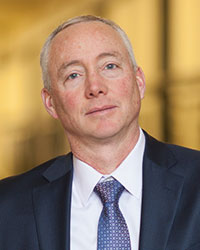
Dennis Whyte | Hitachi America Professor of Engineering, Professor, Nuclear Science & Engineering
Jeudi, le 12 juin, 09h00-09h45
Dennis G. Whyte is the Hitachi America Professor of Engineering and Professor for Nuclear Science & Engineering at the Massachusetts Institute of Technology. A recognized leader in fusion research, especially in the magnetic confinement of plasmas, Whyte has paved an innovative and faster path to producing fusion energy. He is a co-founder of the fusion energy startup Commonwealth Fusion Systems (CFS) which is now the world’s largest private sector fusion company with over 2 billion dollars raised. As Director of the MIT Plasma Science and Fusion Center, he led the CFS-MIT collaboration that produced record high-temperature superconductor (HTS) magnets and design for the SPARC tokamaks whose goal is commercial relevant fusion production in the 2020s. Many of the ideas underpinning the high-field approach — including the use of HTS for high-field, demountable magnets, liquid blankets, and ARC (a fusion power plant concept) — have been conceived of or significantly advanced in his fusion design courses. Whyte has over 380 peer-reviewed publications, is a fellow of the American Physical Society, and has served on panels for the National Academies, the United States government, and the Royal Society, and regularly appears in print and online media advocating for fusion energy science and education. In 2018, Whyte received The Fusion Power Associates (FPA) Board of Directors Leadership Award which is given annually to individuals who have shown outstanding leadership qualities in accelerating the development of fusion, and in 2013 was awarded the Nuclear Fusion award for the most impactful research article in fusion. Whyte earned a B.Eng from the University of Saskatchewan, and an MS and PhD from Université du Québec. He previously served as Director of the Plasma Science and Fusion Center, and the Department Head of Nuclear Science and Engineering, both at MIT. He is also the co-founder of Rutherford Energy Ventures which seeks to accelerate fusion energy’s development by innovative investment and financing tools.
Accelerating commercial fusion energy with high magnetic fields and technology innovation
The advent of REBCO high-temperature superconductors at commercial scale has changed the development path for producing fusion energy with magnetic confinement.
The design and test of a large-bore B>20 tesla peak field superconducting magnet at MIT PSFC, in collaboration with Commonwealth Fusion Systems, realizes a doubling of the allowed B field compared to previous state of the art. This realizes extremely large gains in fusion performance fusion power density scales as B^4 and access to ignition as ~B^5 at fixed plasma physics.
These gains in turn allow for operation away from limits, yet in much smaller and less expensive devices. CFS is presently constructing the high-B tokamak SPARC outside Boston with MIT as its major scientific collaborator, with the goal of demonstrating high fusion energy gain and fusion power density that propels fusion into the commercial energy sector. In addition to describing SPARC, parallel key fusion technology development programs will be described.
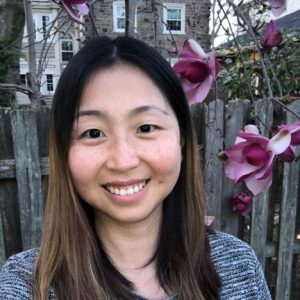
Naoko Kurahashi Neilson | Drexel University
Vendredi, le 13 juin, 10h45-11h30
Naoko Kurahashi Neilson is a Professor in the Department of Physics at Drexel University. Her research centers on high-energy particle astrophysics with her main efforts in the IceCube South Pole Neutrino Observatory and P-ONE, the Pacific Ocean Neutrino Observatory. She uniquely earned her PhD by “listening” acoustically for extremely high-energy neutrinos in the Bahamian ocean, and has missed a tropical experimental site ever since. Kurahashi Neilson is the recipient of the United States National Science Foundation (NSF) CAREER award. She often gives public-facing talks about her research, is passionate about education, outreach and access to science at every level and is a dedicated advocate for diversity in physics.
In 2024, Kurahashi Neilson was elected a Fellow of the American Physical Society for outstanding contributions and leadership in experimental neutrino physics to produce the first neutrino map of the Milky Way, and for strong service to improve the culture for women in physics, including the development of an active community of mid-career women in large physics collaborations.
The Milky Way Seen In High-Energy Neutrinos – What Neutrino Astronomy Can Do For Astronomy and For Particle Physics
The Universe has been studied using light since the dawn of astronomy, when starlight captured the human eye. While astronomy has grown to include different wavelengths of the electromagnetic spectrum, Neutrino Astronomy offers particle physics as a way to observe and understand our high-energy Universe. In 2023, our own Galaxy was observed for the first time in neutrinos, making this the first non-electromagnetic image of the Milky Way. This talk covers Neutrino Astronomy as the intersection of astronomy, particle physics, and high-energy physics, and what it can offer to each of those fields.
Présentations pléniers par les lauréats des médailles de l’ACP 2025
De plus amples informations seront publiées une fois que les lauréats des médailles de l’ACP 2025 auront été sélectionnés.
